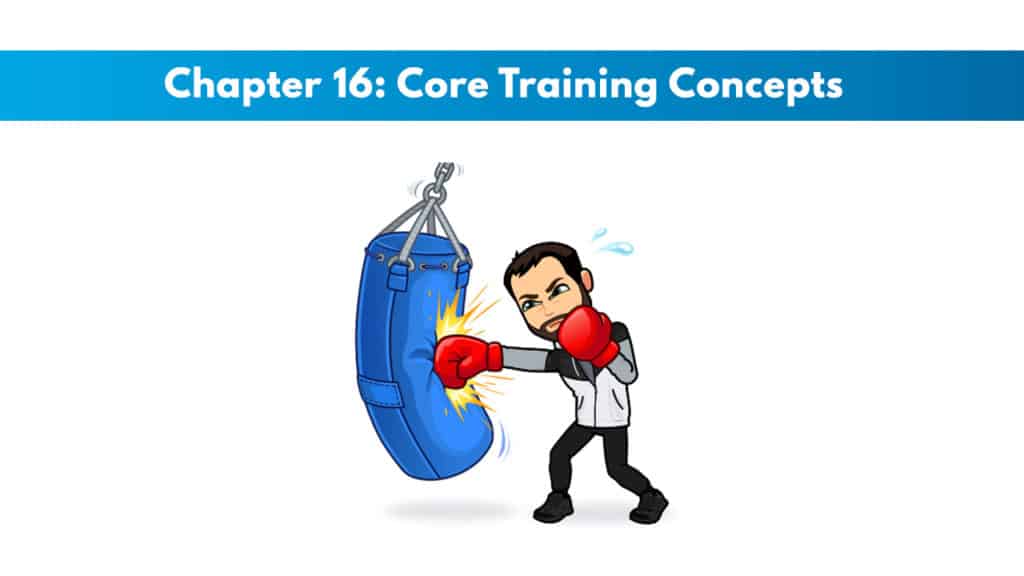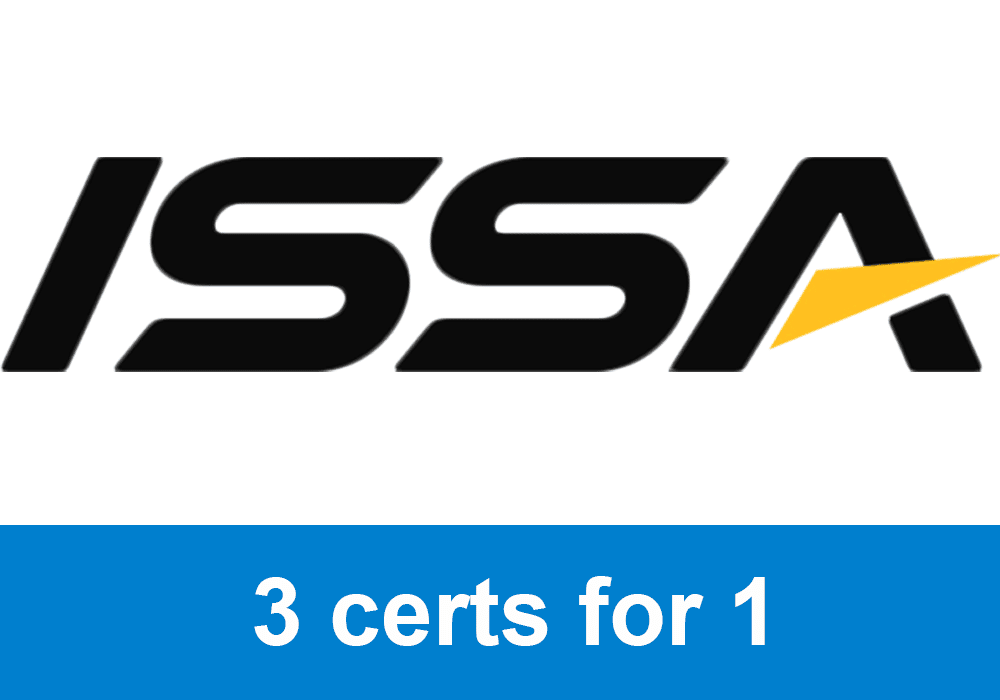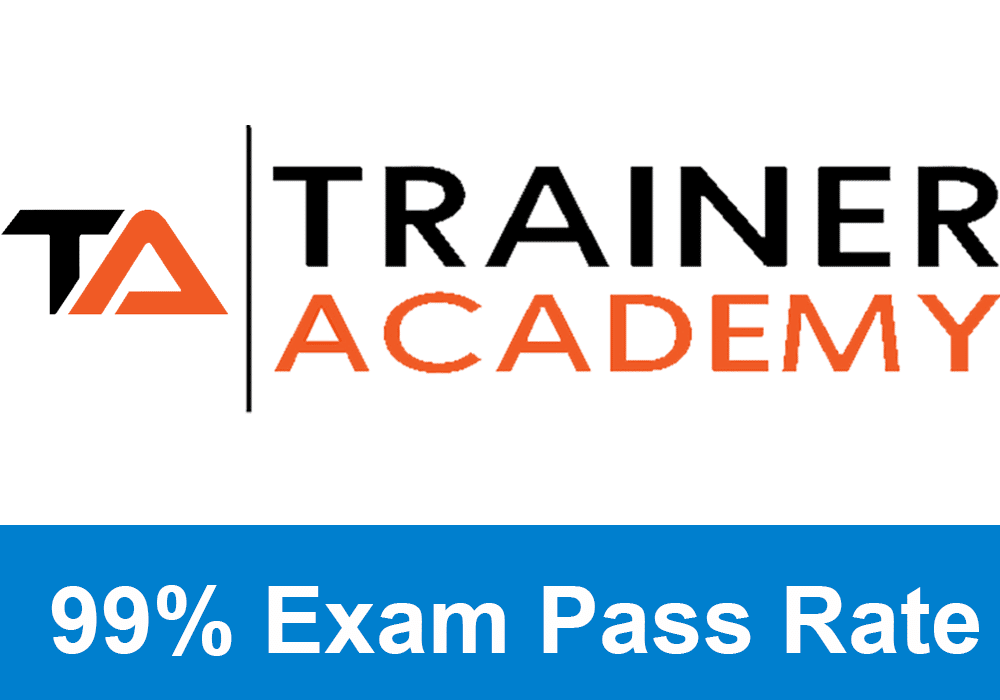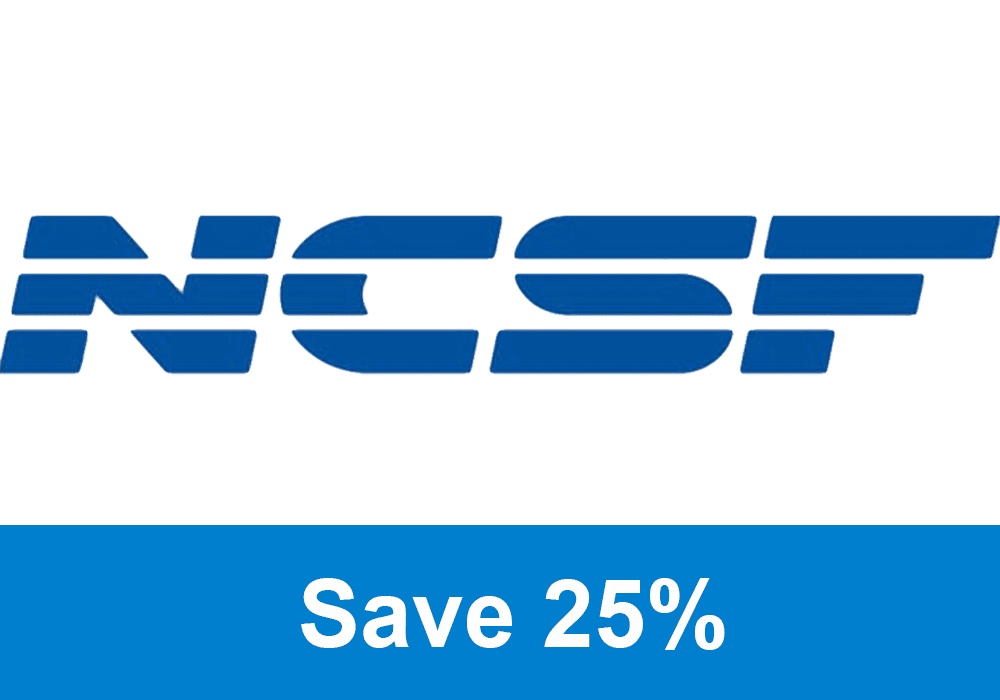
If you have not signed up for NASM CPT, sign up here to save 25% with my personal code PTP25.
Get your copy of the NASM CPT exam cheat sheet. It helps immensely for studying for the exam.
My PTP students report cutting their NASM study time and effort in half with Trainer Academy.
Benefit from the Exam Pass Guarantee and Retake Fee Guarantee. Plus, take advantage of my current discount code PTPJULY for 35% off the MVP Program (Ends July 6th, 2025).
Try it out for free here to see if it’s right for you, or read my detailed review for further insights.
Chapter Goals:
- Find the physical benefits of training the core.
- Be able to tell the differences in core stabilization and movement systems.
- Talk about the mechanisms involved in the drawing-in maneuver and abdominal bracing.
- Use methods to execute, instruct, and cue core exercises effectively.
- Find the common progressions used for core training exercises.
Introduction to Core Training
This training style is vital for improving posture, enhancing performance, and increasing injury resistance.
The goals for training the core are stability in the core, endurance, strength, and power.
Exclusive PTP CPT Offers |
||
|---|---|---|
Most Popular Cert | Best Online NCCA Cert | Best Study Materials |
Gold Standard Cert | A Good Option | Best CPT for you?  |
Core stability and endurance refer to keeping the proper spine and hip posture while moving our extremities.
Core Musculature
It is important for trainers to have a solid understanding of the functional anatomy of the core, to really utilize the principle of core training.
We also call the core the lumbo-pelvic-hip-complex. We divide the musculature via the local muscles and the global muscles.
The local muscles are the ones that usually attach on or near the vertebrae and may also have short attachments between one or two vertebrae.
These local muscles will mainly be the type one muscle fibers, which have the highest density of muscle spindles and are vital for assistance in the proprioception of the spine.
Global muscles are positioned outside of the trunk, as opposed to the core musculature.
These muscles will act to move the trunk, transferring loads from upper to lower and giving stability to the spine with stabilization in multiple segments.
Both systems are still going to be involved in stabilization and neuromuscular control.
Importance of Properly Training the Core Muscles
Some active people may have already had a lot of strength, power, and endurance muscularly for these global muscles, but few people ever truly have well trained local muscles for stabilization.
Exclusive PTP CPT Offers |
||
|---|---|---|
Most Popular Cert | Best Online NCCA Cert | Best Study Materials |
Gold Standard Cert | A Good Option | Best CPT for you?  |
Local muscles must be efficient for people to use strength, power, and endurance. Sometimes we see the global muscles as very strong in someone, but the local muscles lack, leading to poor core use.
Scientific Rationale for Core Training
Exercises always need to be specific for the client and their goals.
The spine has natural curves that need to be there for optimal body performance. The curves develop naturally through aging, but they can be negatively affected by how we use our bodies throughout our life.
Lordotic curves are ones that are inward curves of the cervical and lumbar spine. Kyphotic curves are outward curves of the thoracic and sacral spine.
These conditions of lordosis and kyphosis cause some very common overactive and underactive muscles, so it is important to correct these things.
Scoliosis often comes from alterations in the shape of bones of the spine, and it is an abnormal spinal curve from side to side.
Strengthening the core has been seen to increase things like speed and performance of activities like kicking for people.
Injury resistance is a big part that we look to help with the proper functioning of core muscles.
In the drawing-in maneuver, we recruit the local core stabilizers by drawing in the navel toward the spine.
The drawing-in maneuver is very useful in creating pelvic stabilization and activation of the abs.
Guidelines for Core Training
Comprehensive training programs for the core should ideally be systematic, progressive, and functional to emphasize the entire spectrum of muscle actions that focuses on producing force, reducing force, and dynamically stabilizing.
Designing a Core Training Program
Training the core aims to develop the optimal amount of stability, endurance, strength, and power. We will usually go through core training using multisensory items and things in the environment.
This is the critical sequence we use to optimize function:
- Intervertebral stability (stabilization of individual spinal segments)
- Lumbopelvic stability (stabilization of lumbo-pelvic-hip complex)
- Movement efficiency (improved movement quality and force output)
Exercises should, ideally, focus on stabilizing the spine and pelvis without the gross movement of the trunk. This is the initial start of any core program.
Next, the progressions should go to more dynamic concentric and eccentric movements throughout the spine in a full range of motion. The exercises here improve lumbopelvic stability, concentric strength, eccentric strength, and efficiency of the neuromuscular core.
The final progression is to improve the rate of producing force and efficiency of movement in the muscles of the core and extremities. We are aiming to stabilize and generate force at functional speeds dynamically.
The five kinetic chain checkpoints are:
- Feet: Approximately shoulder-width apart (when appropriate) and pointing straight ahead (when appropriate)
- Knees: In line with the second and third toes (avoid allowing knees to cave inward)
- Hips: Level and in a neutral position
- Shoulders: Neutral position (not protracted or elevated)
- Head: Cervical spine in a neutral position (chin tuck)
It is important to go through all the exercises and know how to perform them and their optimal differences and progressions for clients. This is a big part of the book and is in video form for the study guide.

 Have a question?
Have a question? 



I think lordosis was supposed to be the inward concave curvature of the spine not the outward. And kyphosis is the outward convex curvature of the spine. Just please correct me or provide clarification because I really want to pass and not get confused.
Hey, thanks for the correction. I switched those two, as you were right; they were slightly mixed up.